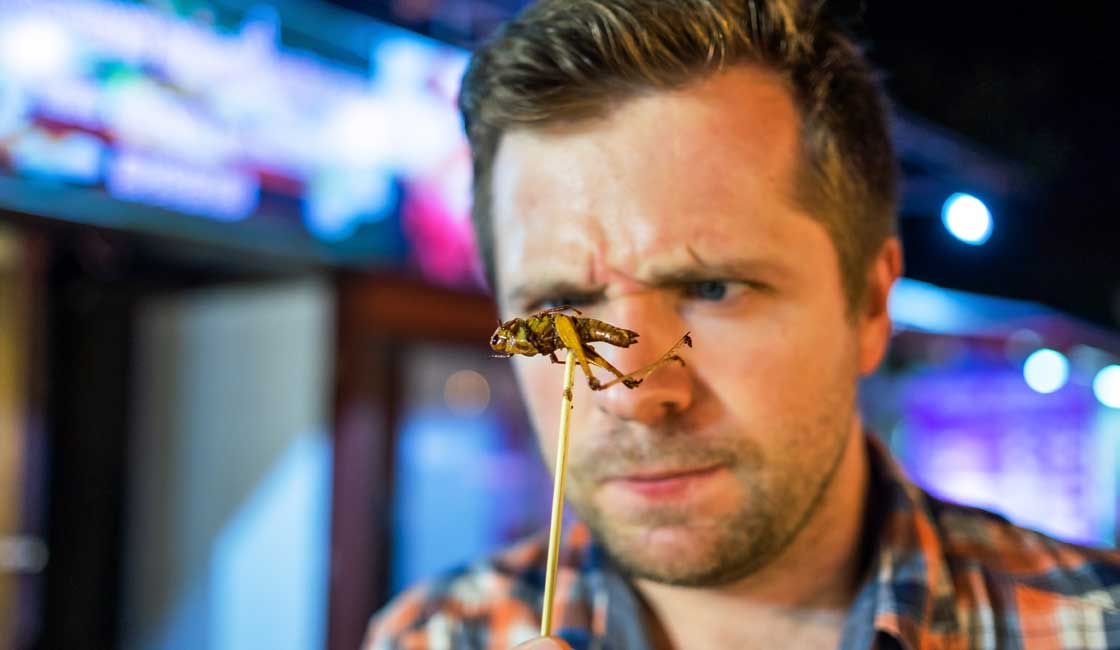
Cambodia is a country largely known to tourists as the home of the Angkor Wat Complex, the Mekong River, and its dark history under the Khmer Rouge Regime. However, it is also bizarrely known as the place people can go to eat various types of spiders and insects, prepared in very curious ways.
Well, almost literally anything goes. The most surprising specimen may be the tarantula, however, on the menu are also crickets, cockroaches, scorpions, grasshoppers, giant water bugs, some varieties of water snake, red ants, grubs, and even maggots! Each of the various critters is prepared in different ways, although most are deep-fried. Critter fritter anyone?
Enjoy this summary on the different styles utilized to prepare our favorite multi-legged invertebrates:

Silkworm salad is a rather elegant meal
We all know about maggots; these ubiquitous fly larvae are associated with anything dead and rotting. So, naturally not something you would consider edible. Silkworms, those hardworking larvae of silk moths known for their namesake fibers are also eaten. Both are widely available and prepared in large batches. They are eaten by the handful after being deep-fried with chilis and onion, splashed with a touch of soy. Doesn’t sound that bad, right?
Grubs are similar, but larger beetle larvae found beneath tree bark or rotting logs. These are often skewered and cooked over an open flame until tender. They are the fatter and juicer option and are known to ‘burst’ with flavor, eek!
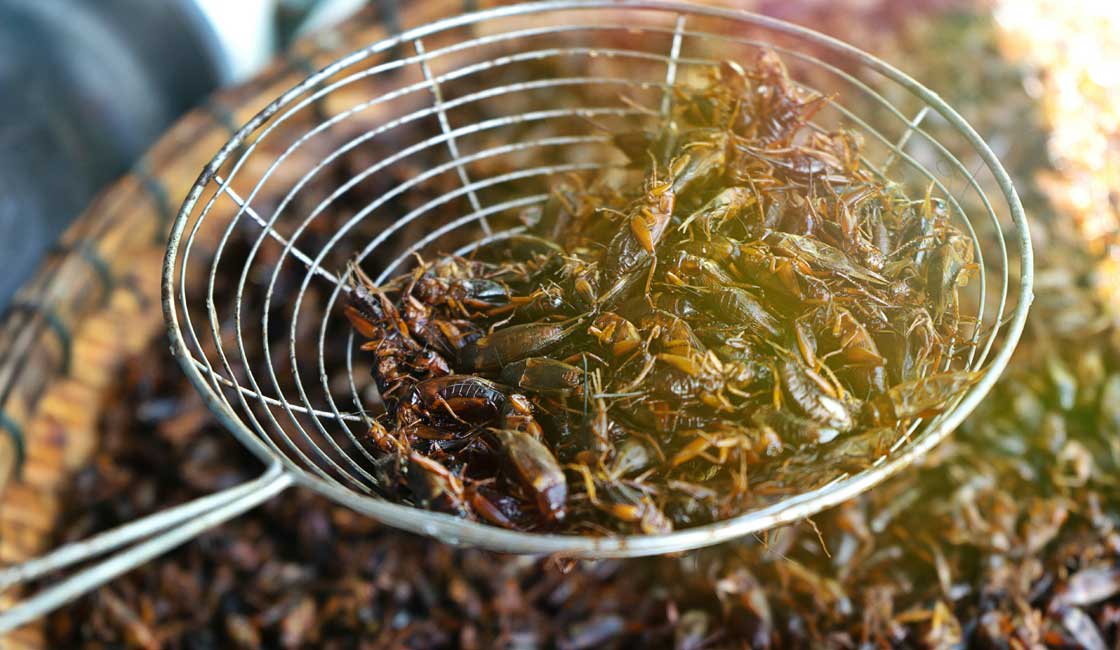
Crunchy
Before preparation crickets may have their heads, entrails, and wings removed, although this depends on the style of the cook. Typically fried, they are served with a touch of salt for flavor. While not as juicy as the worms mentioned above, they are a mild, unassuming snack that is sometimes served with a cold beer.
Grasshoppers and locusts are collected in open rice fields with fine-meshed nets and are relatively abundant. Sold in large bundles after being deep-fried, they have a satisfying crunchy texture. Given that these two are typically considered pests with the potential to ravage important crops, eating them in large quantities is encouraged!
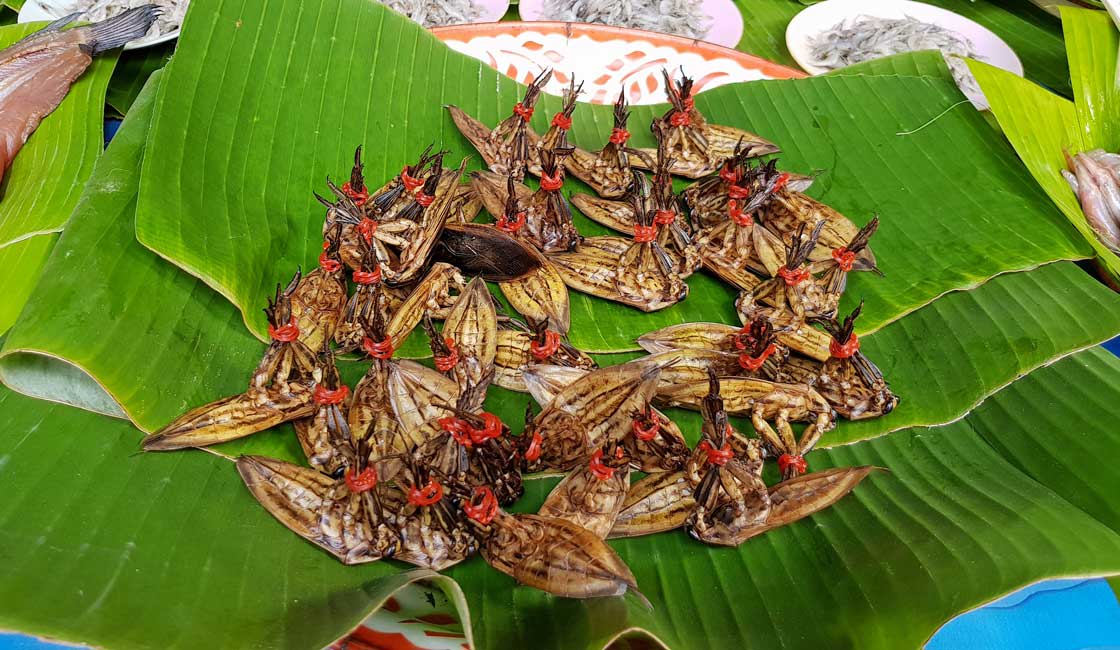
Water bugs on banana leaves
Admittedly, this one is a challenge given its size and unusual shape. If you squint your eyes, you can pretend it is a shrimp or prawn, but only if you are a highly imaginative person. For most, they are one of the more revolting items on the menu.
Despite its looks, the flavor is unique having been described as containing notes of citrus, black licorice, or even bubble gum and jellybeans. For the expert, it is compared to the flavor of crab or scallop. They can be prepared much like the rest of the bugs, but sometimes ground into powder and converted into sauces.
Okay, clearly not a bug, but certainly deserves a mention as one of the few vertebrates offered. This one should really be avoided by the curious traveler. Harvesting of water snakes, primarily from the Tonle Sap Lake, is an unsustainable endeavor and is contributing to the ongoing ecological pressure on this unique ecosystem.
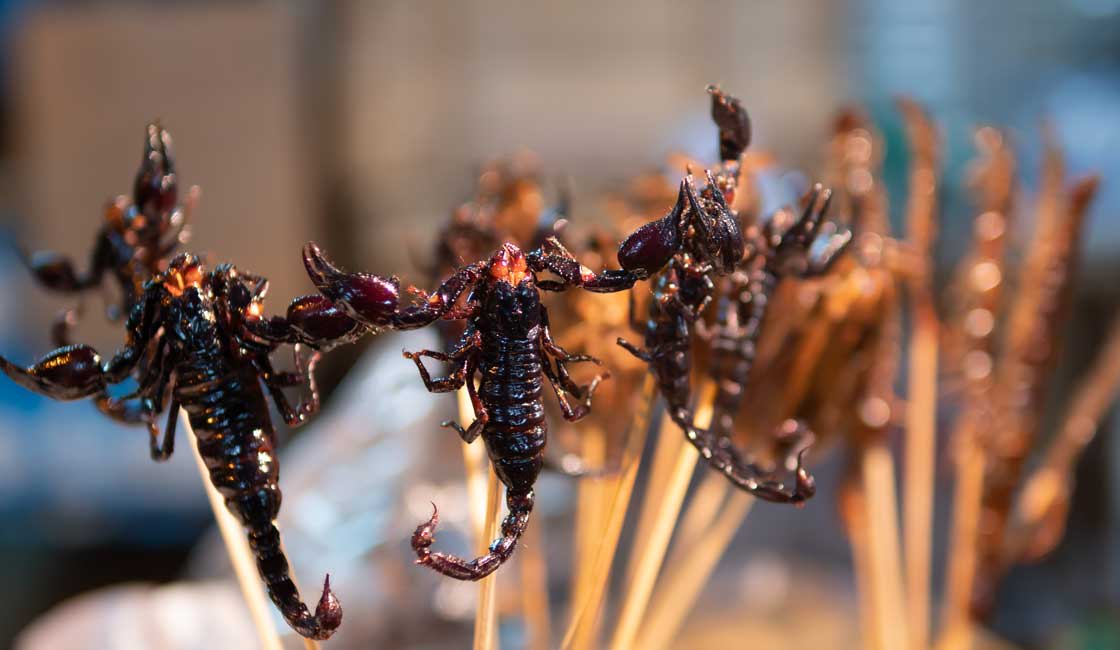
Scorpio skewers are a less common delicacy
Potentially as spine chilling as spiders for most people, but for those brave enough, a reasonable alternative. It is rumored that Angelina Jolie even sampled this crispy arachnid-snack-on-a-stick while visiting Cambodia back in 2016.

Market display
What does a fried spider taste like? In this video, I take the research into my own hands (and mouth!) and sample a single serving of Tarantula, as well as a handful of fried crickets.
This particular example was deep-fried with sugar, ginger, and garlic and was surprisingly delicious!
Admittedly, only the legs were eaten. The abdomen may have to wait for the next trip and sourced from a verified farm-to-table vendor.
They’re sometimes breaded before deep-frying and often served with an accompanying dipping sauce, such as tamarind.
A video of the author eating a tarantula in Cambodia
This video above was taken in the small, roadside market of Skun, perhaps the most well-known insect market in Cambodia. It is located roughly 70 kilometers outside of Phnom Penh, on the way to Kampong Cham, a common embarkation point for Mekong River cruises.
For travelers visiting the most common tourist sites, such as Siem Reap, or the capital, Phnom Penh, spiders and insects are available in various locations. Usually where tourists congregate, and particularly where street foods are sold. You might find ambulatory street vendors, often women or children, offering them to travelers from trays, or creatively displayed in specialized kiosks. You may even get the occasional vendor to place live specimens on your shirt for the token Instagram shot.

Bugs in a bag
The history of insect consumption may be attributed, in part, to the desperation the population faced under the Pol Pot regime, where most of the population was sent to the countryside against their will to work in labor camps. Poverty may have led to the consumption of insects as many simply could not afford much else. At any rate, whatever the driver, eating bugs in Cambodia is now common practice and one of the reasons some decide to visit this intriguing destination.
It is highly debatable whether it is safe to eat the insects on offer in Cambodia. Not because of any risk of eating bugs in general, but more to do with the fact that they may not be prepared or stored in the most sanitary of conditions. Although they are generally deep-fried, they may be exposed to the elements for hours on end. Sanitary conditions are questionable, as are the serving methods.
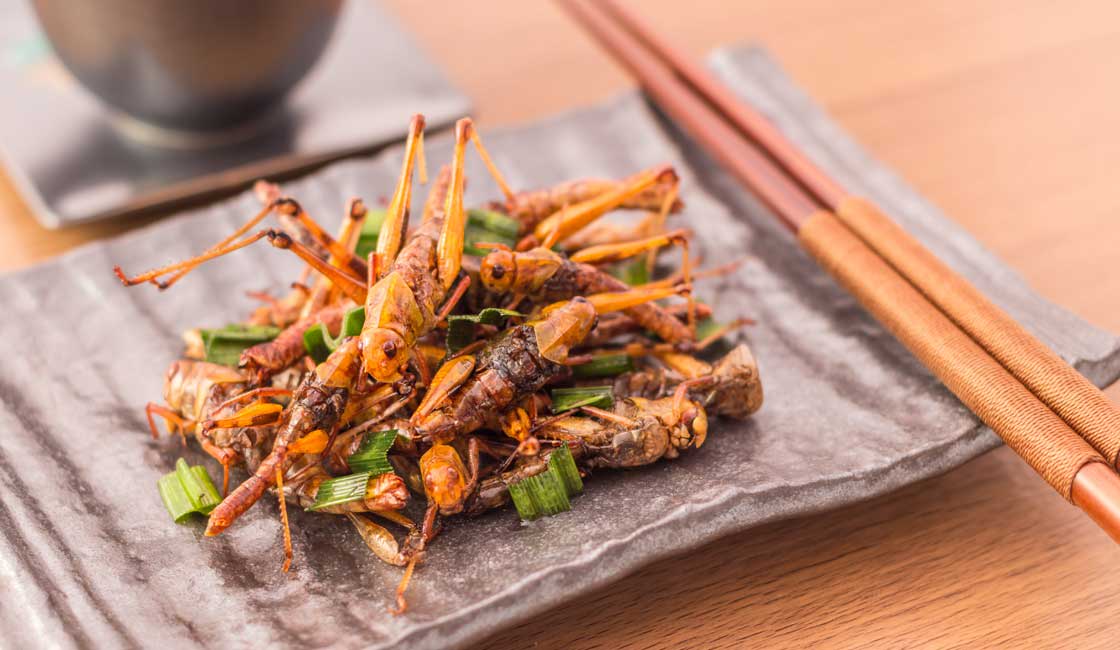
Grasshoppers in a restaurant
There are two sides to the argument. On one side, according to FAO, the United Nations Food and Agriculture Organization, insects will play a large part in providing a more sustainable source of protein and calories needed to support the planet’s burgeoning population and are considered critical for future world food security. FAO states that edible insects contain high-quality protein, amino acids, vitamins, calcium, zinc, and iron for humans.
Replacing our seemingly insatiable demand for meat and fish with insects would reduce the impact we now have on oceans and forests. The consumption of beef alone is known to be a large driver of deforestation worldwide, and particularly in the Amazon.
On the other side, in Cambodia, much of what is served is wild-caught. However, the population of tarantulas in Cambodia, in particular, is in decline, but the blame cannot be placed squarely on random tourists eating fried tarantulas. Cashew and rubber plantations are fast replacing Cambodia’s native forests. As are activities from the massive timber industry, both legal and illegal.
The point is, while tourism is beneficial, and the eating of tarantulas in Cambodia is an interesting and surprisingly tasty part of the experience, they need to regulate what is happening to wild populations and offer more sustainable, farm-raised alternatives.
While Rainforest Cruises aim to provide accurate and up-to-date information, we make no representations as to the accuracy or completeness of any information herein or found by following any link on this site. Rainforest Cruises cannot and will not accept responsibility for any omissions or inaccuracies, or for any consequences arising therefrom, including any losses, injuries, or damages resulting from the display or use of this information.




